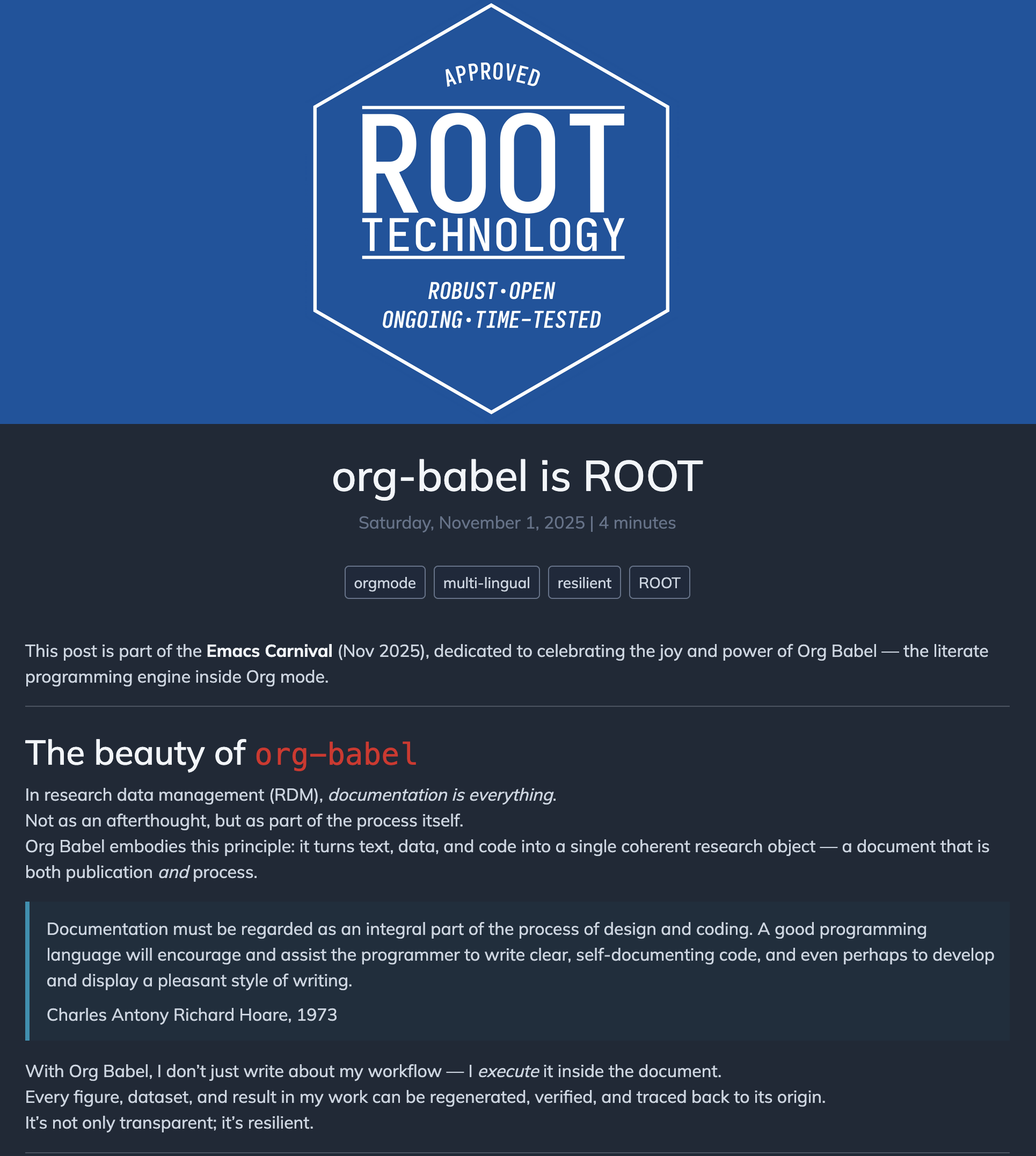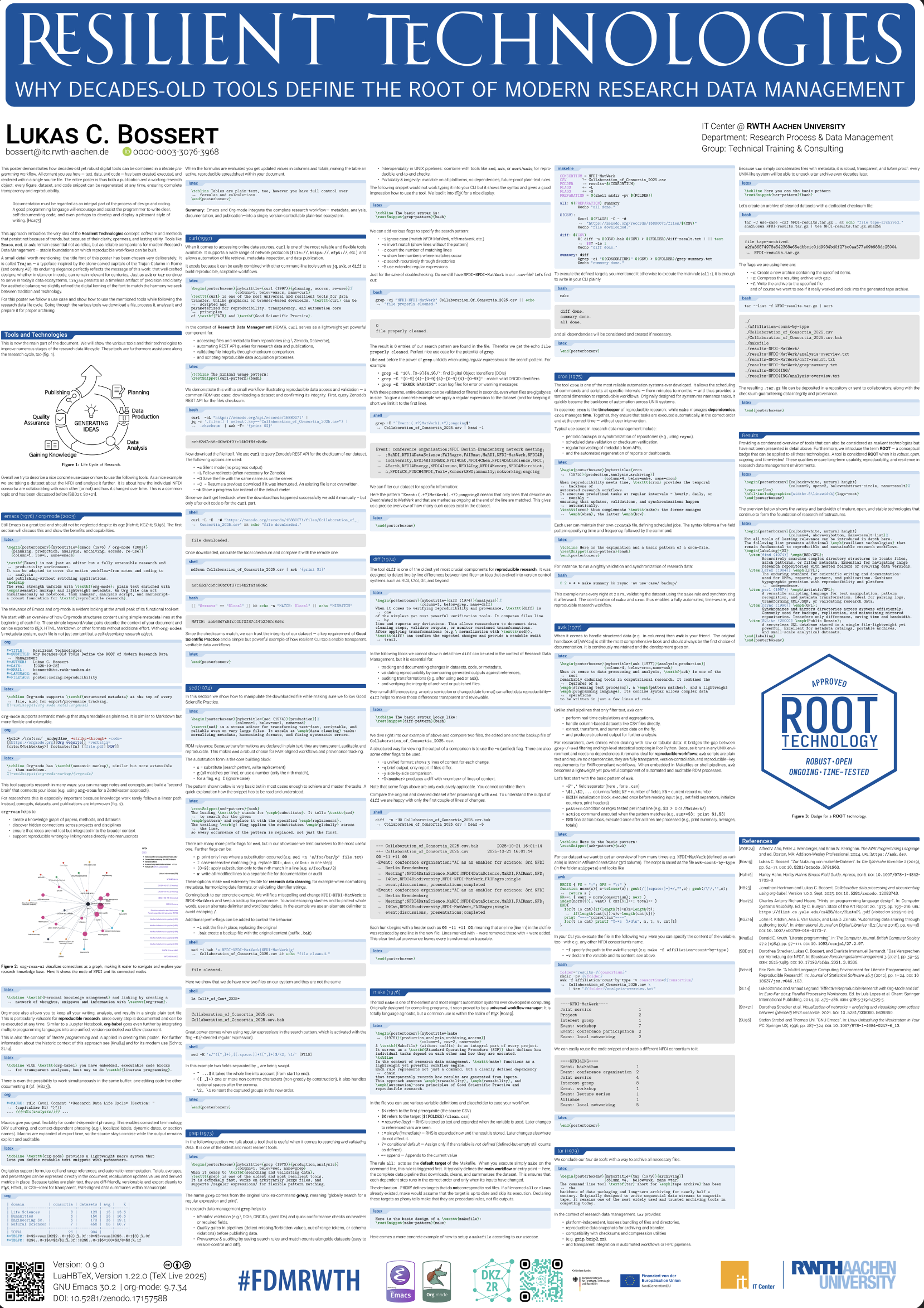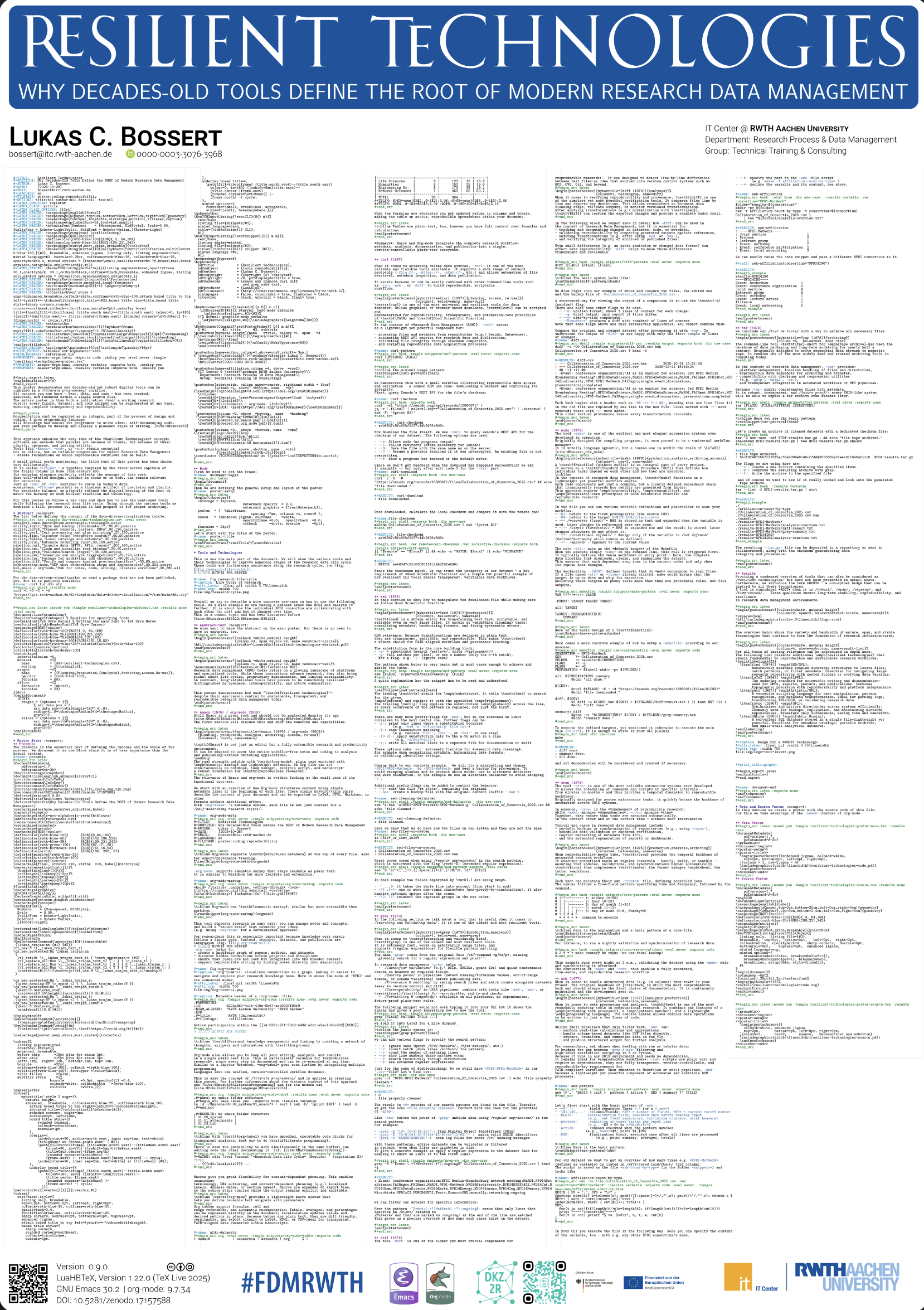Really enjoying this month’s #Emacs Carnival on #orgmode — especially the focus on #orgbabel!
Huge thanks to @donaldh for curating the topics.
For me, #orgbabel is where documentation, data, and computation truly meet — it turns notes into living, reproducible workflows.
I’ve written down why I think org-babel is a *ROOT technology*:
https://lukascbossert.de/posts/org-babel/
Really enjoying this month’s #Emacs Carnival on #orgmode — especially the focus on #orgbabel!
Huge thanks to @donaldh for curating the topics.
For me, #orgbabel is where documentation, data, and computation truly meet — it turns notes into living, reproducible workflows.
I’ve written down why I think org-babel is a *ROOT technology*:
https://lukascbossert.de/posts/org-babel/
The meta poster frames the concept: clarity + openness → resilience. It traces the lineage from Knuth’s Literate Programming to Org-mode and NFDI practice, and introduces the ROOT badge as a compact signal for robust, open, ongoing, time-tested tools. It also spotlights resilient stalwarts often hiding in plain sight—find, LaTeX, perl, rsync, SQLite—showing why they remain reliable RDM building blocks.
#ResilientTech #LiterateProgramming #OrgMode #RDM #NFDI #FAIR https://doi.org/10.5281/zenodo.17157588
The source poster shows the guts: Emacs/Org-babel + LaTeX; noweb tangling; minted listings; multi-column layout. The complete source code! The poster is both publication and working research object. Example flow: query Zenodo via curl, download dataset, compute checksum, compare, then proceed with scripted transforms—transparent steps you can re-run. Everything is fully specified, so you can regenerate all of it from source. #Emacs #OrgBabel #TeXLaTeX #orgmode
https://doi.org/10.5281/zenodo.17157588
My #emacs #writing #writingExperience #emacsCarnival submission.
Discussing my transition to #eev away from being a heavy user of the popular #orgmode.
My writing primarily concerns #lisp #programming, so the difference between #eepitch and #orgBabel features heavily.
Looking forward to hearing from everyone including the other emacs carnivalians.
CC @greg (Writing Experience emacs carnival host)
My #emacs #writing #writingExperience #emacsCarnival submission.
Discussing my transition to #eev away from being a heavy user of the popular #orgmode.
My writing primarily concerns #lisp #programming, so the difference between #eepitch and #orgBabel features heavily.
Looking forward to hearing from everyone including the other emacs carnivalians.
CC @greg (Writing Experience emacs carnival host)
#OrgMode (orgmode.org) has, among many other things, a way you can make code notebooks, #OrgBabel. Like #Jupyter, but less webby, and inside #Emacs, and supporting many languages - even multiple in the same document - thence its name.
Thanks to the ob-pikchr package by @SReyCoyrehourcq, Pikchr is one of the languages you can just write in the middle of your document this way.
Pikchr supports #darkmode, and I've just made a pull request that gets ob-pikchr in on the dark-mode game.
https://github.com/reyman/ob-pikchr/pull/1
Many thanks to Sebastien for the help ob-pikchr has provided in diagramming my thoughts! You go use it too!



